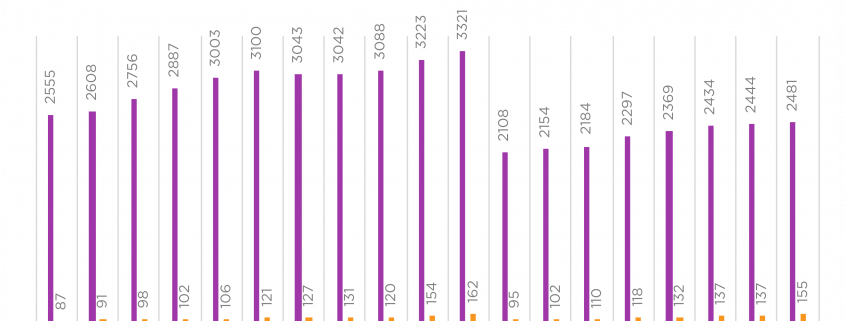Latinx community sees little growth in representation
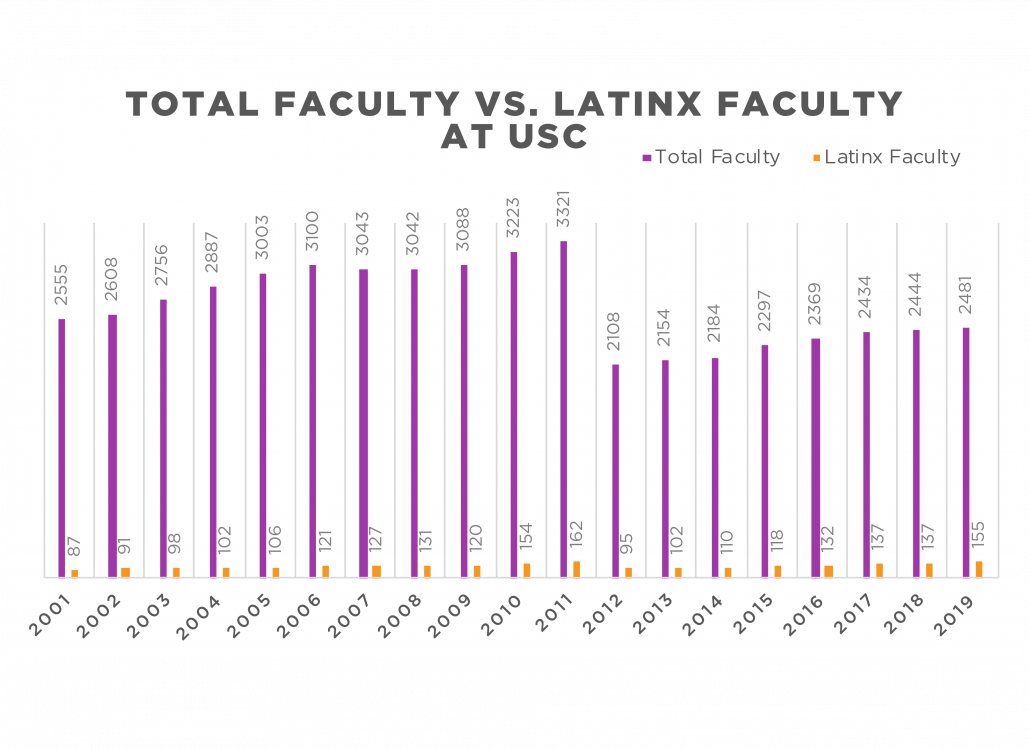
Although their representation at USC isn’t huge, Latinx professors and community members have made their mark at the University. George Sanchez, a professor of history and American studies and ethnicity, has mentored low-income and first-generation students and students of color. The USC Latino Forum has hosted various celebrations and events on Latinx topics, including an event that honored the work of the late Mexican American journalist Rubén Salazar.
Latinx professors and students have time and again contributed to the USC community. They have held events such as Voices for Justice: 200 years of Latino Newspapers in 2009, a panel celebrating Spanish-speaking media, and have spearheaded efforts to raise awareness on Latinx issues and represent the voices of the small Latinx population on campus. However, despite their contributions to USC, these Latinx professors and students make up only a small percentage of the campus’ population. In the early 2000s, Latinx professors were sparse and scattered across USC’s 23 schools, as were students. Twenty years later, these numbers have stayed largely the same — the student body currently consists of 15% Hispanic students, and only 6% of USC professors identify as Latinx, according to USC’s Integrated Postsecondary Education Data System.
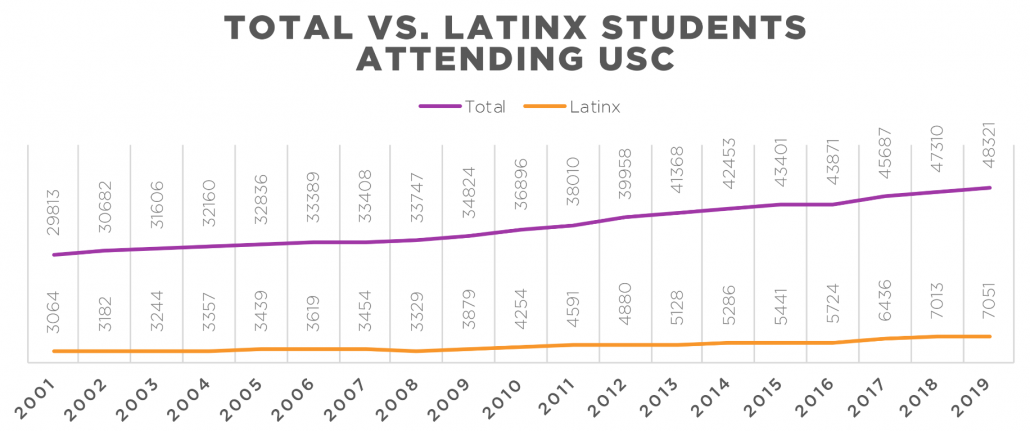
The proportion of tenured Latinx professors has also remained roughly the same over time. Currently 5% of the faculty is Latinx, less than a three percentage point increase since 2001. Just 5% of tenure track faculty members identified as Latinx during the 2019-20 academic year compared to 4% in 2001.
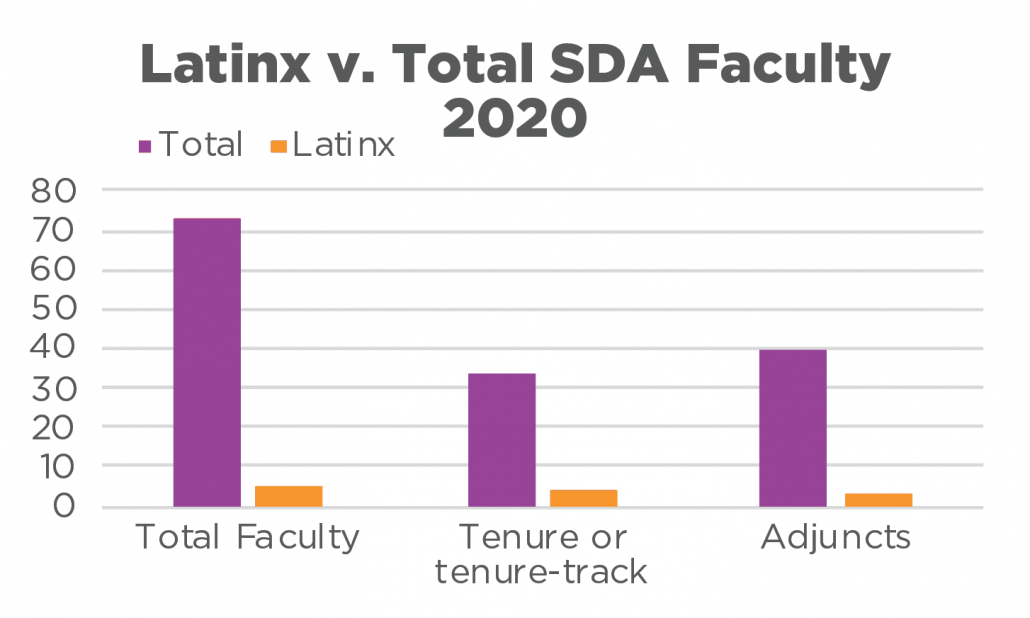
Of the 15 schools from which the Daily Trojan requested faculty and staff diversity reports, only the Annenberg School for Communication and Journalism, the School of Dramatic Arts and the Kaufman School of Dance responded. A University spokesperson said some schools did not have diversity statistics readily available.

At Annenberg, there were three Latinx tenured professors in 2017 and five in 2018, according to the school’s Diversity Initiative 5-year-Strategic Plan. Kaufman has two Latinx faculty members, neither of whom are on tenure and one who is an artist-in-residence, a post that allows artists within an institution to research or produce work and provide educational instruction to students for a limited period of time. SDA currently has four Latinx tenured faculty members, according to the school’s data.
Nearly two-thirds of USC’s tenured Latinx faculty in 2019 were men, only a slight decrease from 2001, when just under 75% of the Latinx faculty were men. The data did not indicate whether faculty at USC identified as transgender, non-binary, gender non-conforming or gender fluid or if they were given the option to signify their gender identity.
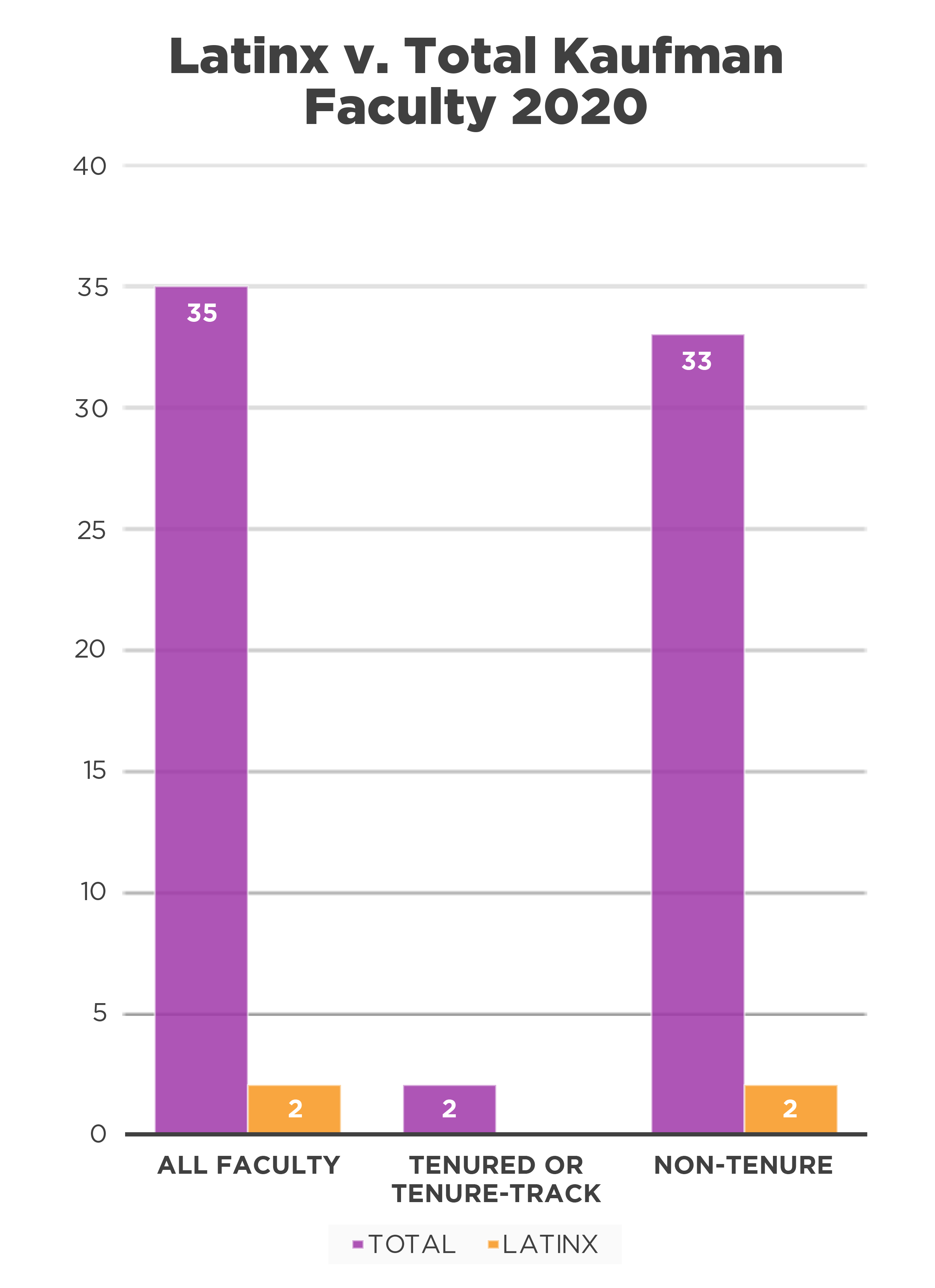
Students at schools across USC have called on administrators to diversify their staff, particularly to increase the representation of Black and Indigenous people and people of color. Letters and Instagram posts directed to individual schools such as SDA and the School of Architecture were created in light of ongoing Black Lives Matter protests and calls for universities to address racism at their institutions.

